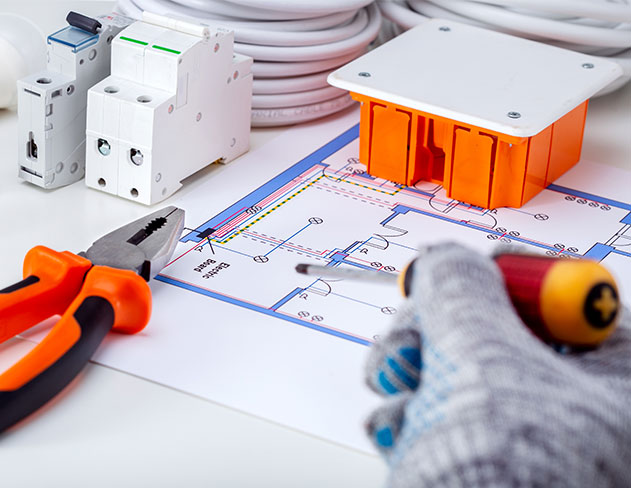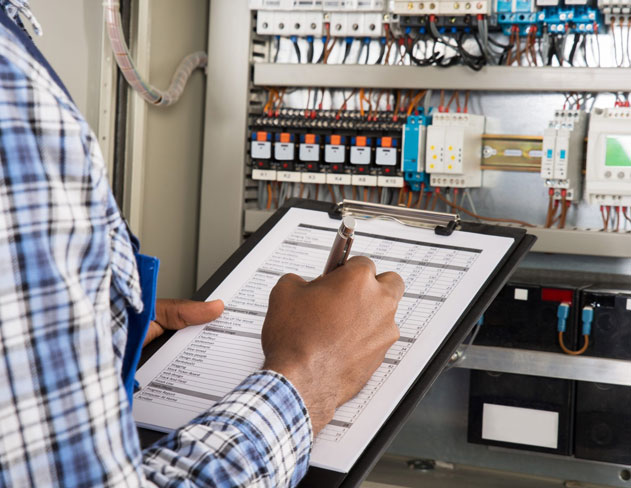Emergency Light Testing Procedure and How We Test Emergency Lights. Maintaining a robust, compliant emergency light testing process is a huge responsibility. With complex regulations and infrastructure, getting emergency lighting tests right can be daunting. This is where partnering with Hexo Electrical Testing pays dividends.
With specialised expertise honed across decades of navigating the UK landscape, we offer emergency light testing services that go beyond basic compliance. Our technicians stay completely up-to-date on the latest British Standards and regulatory shifts, ensuring your emergency light testing process adheres to all legal mandates.
We combine advanced testing tools like thermography and 3D scanning with diligent emergency light testing processes to provide unparalleled visibility into your systems. At Hexo Electrical Testing, our comprehensive testing and insights help you make data-driven decisions to strengthen safety and compliance.
Whether identifying improvements, justifying budgets, or maintaining regulatory alignment, we’ve covered your emergency light testing process. Read on to learn why teaming up with Hexo Electrical Testing can illuminate the path to world-class safety, compliance, and visibility.
The UK Context: Why It’s Different
The UK government mandates rigorous standards for emergency lighting through regulations like the Regulatory Reform (Fire Safety) Order 2005. With risk assessment and compliance enforcement, facility managers are legally obligated to maintain robust emergency systems.
Infrastructural complexities also necessitate tailored testing approaches. The UK’s varied building ages, designs, and footprints present unique challenges that demand specially adapted processes.
Whether modern high-rises or centuries-old complexes, flexibility and in-depth know-how are vital for reliable testing. Strict compliance paired with structural intricacies make the UK emergency lighting landscape unlike any other.
Tools and Equipment for Testing
Several key tools and equipment are required to conduct thorough emergency light testing. Firstly, a digital multimeter allows precise current and voltage measurements during battery checks.
For gauging illumination levels, lux metres provide quantifiable readings on lighting strength. Tagging devices are also essential for properly labelling and locating every luminaire. Finally, UK-approved dedicated testing kits offer an all-in-one solution for equipment.
Detailed Emergency Light Testing Procedure
At Hexo Electrical Testing, our exhaustive emergency lighting inspection process combines proven techniques with cutting-edge innovations tailored specifically to the UK landscape:
Initial Setup
- Our technicians will fully isolate each luminaire from the normal lighting supply and circuit to ensure reliance solely on the internal backup battery power during testing.
- Using a digital multimeter, we will take voltage readings across the battery terminals to verify functionality and charge level. All batteries must show maximum charge, usually around 6V for 6V batteries or 12V for 12V batteries.
- Any luminaire batteries not showing full voltage will be flagged for potential replacement to ensure optimal emergency lighting functionality.
Functional Testing
- With the normal supply disconnected, our technicians will activate the emergency lighting mode on each luminaire via the built-in test switch.
- Visually inspecting the illuminated coverage area, we check for any dim, flickering or fully dark spots which could indicate lighting faults or outages. Particular attention is paid to maintaining visibility in paths of egress.
- Using a lux metre, we take quantitative light level readings by holding the metre at floor level in multiple designated test locations. These lux readings are compared against UK requirements to guarantee sufficient illumination for safe emergency egress.
- Any connected emergency signage is methodically inspected by our technicians for appropriate brightness, clarity of text or symbols, and visibility from required angles of approach. Any deficiencies are flagged.
Full Discharge Testing
- Luminaires undergo full-duration discharge tests under live monitored conditions to identify any drop off or deterioration in illumination as the batteries deplete.
- Our emergency lighting experts meticulously watch for any flickering, dimming or decline in light levels which can pinpoint units at risk of impending battery failure.
- Discharge testing is conducted on the precise number of luminaires stipulated by UK emergency lighting regulations. We ensure full compliance to mandated testing extents.
With decades of UK-specific expertise, we tailor the procedures to your unique facility while adhering to British Standards for optimal compliance confidence. Contact us today to experience our dedication to safety and visibility.
Full-rated Duration Testing
Our full-discharge testing procedures meet or exceed all UK regulatory requirements:
- We test luminaires for their full rated operating duration, whether 180 minutes for pole units or 1-3 hours for most luminaires.
- Our technicians closely monitor for any drop in illumination as the batteries deplete, flagging units at risk.
- Flickering or dimming is meticulously documented, indicating potential pending battery failure.
- We conduct discharge tests on the precise number of luminaires mandated by UK regulations for a given facility.
- All results are fully documented for transparency and compliance record keeping.
By combining decades of expertise with rigorous testing, we provide assurance your emergency lighting meets UK duration standards.
UK Regulations and Compliance
At Hexo Electrical Testing, we maintain comprehensive knowledge of UK emergency lighting regulations and requirements:
- Our technicians stay fully up-to-date on the latest British Standards like BS 5266 that shape emergency lighting rules.
- We ensure mandated monthly visual checks, 6 month/1 year/3 year discharge tests are completed.
- All testing documentation and reports strictly meet UK requirements.
- Our compliance team continually monitors for regulatory changes and updates our protocols accordingly.
Partnering with us takes the stress out of keeping up with evolving UK emergency lighting rules. We’ve got you covered.
Advanced Testing Techniques
We utilise cutting-edge innovations to provide unparalleled emergency lighting system visibility:
- Infrared Thermography Cameras: Our thermography identifies luminaire faults and impairments impossible to detect visually, before failures occur.
- 3D Laser Scanning: We create detailed 3D models of your facility’s existing emergency lighting, precisely revealing coverage gaps that need addressing.
- Geographic Information System (GIS) Mapping: Our test data is tied to specific luminaire locations, allowing robust visual representation and analysis.
- Remote Monitoring: We implement real-time remote emergency lighting monitoring to track status and receive instant alerts.
By combining these advanced technologies with on-site expertise, we deliver actionable insights into your system’s current state and future needs. Our testing goes far beyond basic compliance to provide true emergency lighting confidence.
Addressing Common Challenges in Testing
There are some common issues that can arise during emergency lighting testing that facility managers must be prepared for:
- Dim or flickering lights often indicate expired LEDs or other lighting failures that require replacement.
- Battery malfunctions are unfortunately common. Taking voltage measurements during testing can identify these problems proactively.
- The varied and complex nature of UK building structures demands flexible, tailored testing approaches for different facility types.
With diligence, emergency lighting knowledge, and fault-finding skills, facility managers can overcome any UK-specific testing challenges. But anticipating potential problems is key to smooth examinations and compliance.
Post-Testing: Ensuring Longevity and Compliance
The responsibility does not end after emergency lighting testing is complete. Proper maintenance between examinations is crucial for keeping systems compliance and operational. Recommended post-testing care includes:
- Regular cleaning of luminaires to maximise light output.
- Replacing expired batteries at least annually.
- Checking electrical wiring integrity and making any needed repairs.
- Updating logbooks with maintenance notes, battery replacements, or repairs.
- Retesting any altered emergency lighting units before the next scheduled inspection.
Staying current with evolving UK regulations and adjusting maintenance procedures accordingly is also essential. With diligent ongoing emergency lighting care, facility managers can maintain compliance long-term.
Conclusion Emergency Light Testing Procedure – How We Test Emergency Lights
With stringent UK regulations and infrastructure complexities, maintaining robust emergency lighting is an enormous ongoing responsibility fraught with risks. But by partnering with the experts at Hexo Electrical Testing, you can rest assured your systems are in experienced, diligent hands.
Our decades of specialty in the UK compliance landscape means no challenge or surprise gets past us. Our technical expertise and advanced tools deliver unparalleled visibility into your current emergency lighting capabilities. And our rigorous testing procedures give you the insights you need to make data-driven decisions on maintenance, upgrades and beyond.
While regulations will continue evolving, our commitment to taking the emergency lighting testing burden off your shoulders will remain constant. By teaming up with us, you can focus on your core operations knowing your people, assets and compliance are illuminated. Contact Hexo Electrical Testing today to partner with the UK’s emergency lighting experts.

